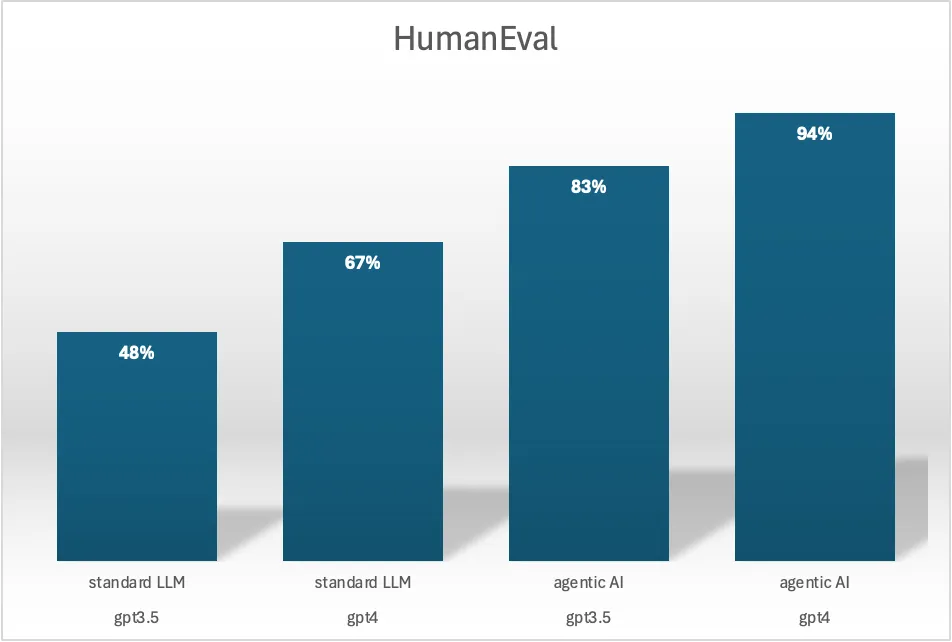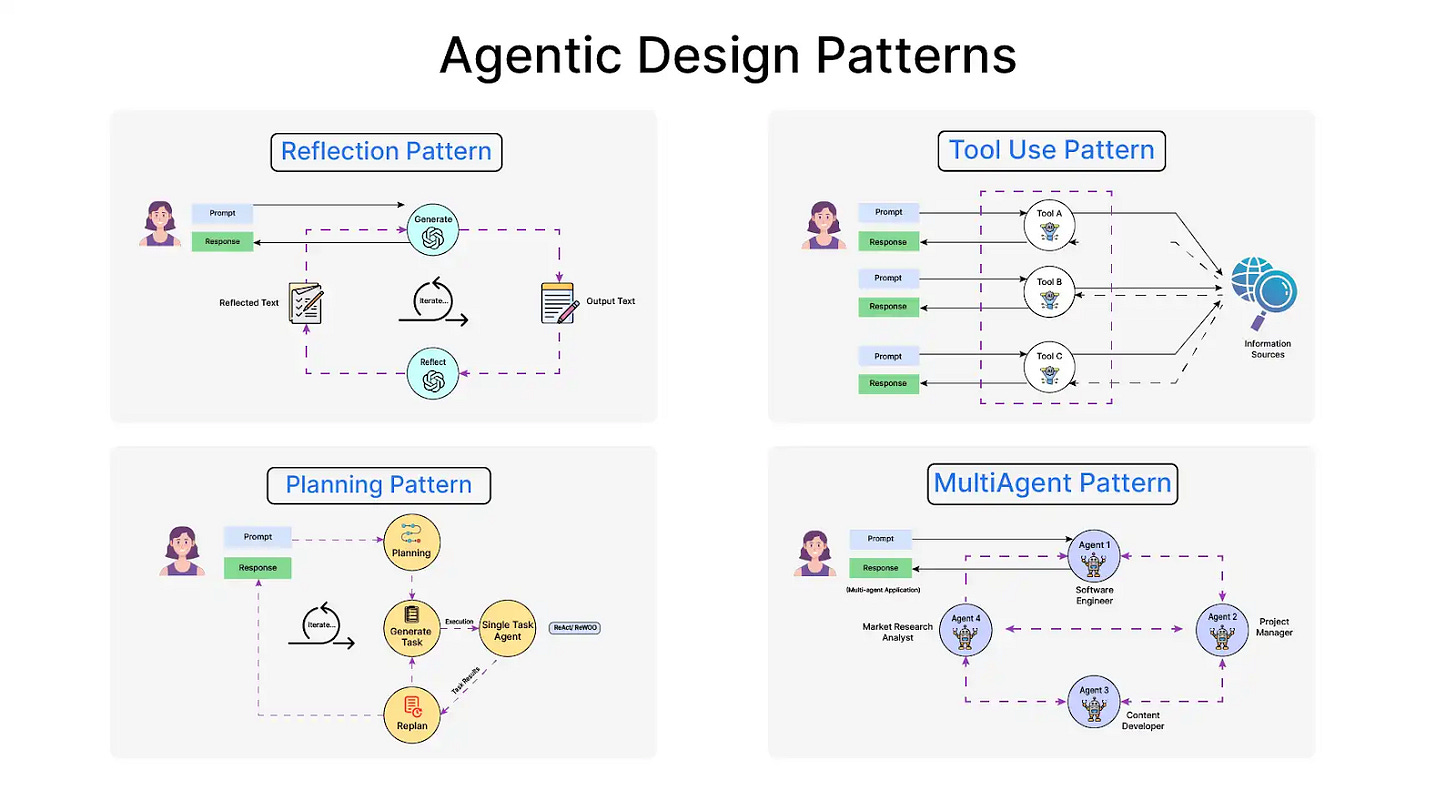Agentic AI in Action!
This newsletter explores the key design patterns of Agentic AI—reflection, tool use, planning, and multi-agent collaboration—and demonstrates how these workflows enhance AI performance.
About the Authors
Arun Subramanian: Arun is an Associate Principal of Analytics & Insights at Amazon Ads, where he leads development and deployment of innovative insights to optimize advertising performance at scale. He has over 12 years of experience and is skilled in crafting strategic analytics roadmap, nurturing talent, collaborating with cross-functional teams, and communicating complex insights to diverse stakeholders.
Manisha Arora: Manisha is a Data Science Lead at Google Ads, where she leads the Measurement & Incrementality vertical across Search, YouTube, and Shopping. She has 11+ years experience in enabling data-driven decision making for product growth.
Introduction
Artificial Intelligence (AI) is evolving beyond static, one-shot responses. Traditional AI workflows process inputs in a linear fashion, generating an output without revisiting or refining their reasoning. While effective in some cases, this approach often limits accuracy and adaptability.
Agentic AI introduces a more iterative, self-improving workflow—one that mirrors human problem-solving by incorporating planning, reflection, and refinement. This structured approach enhances AI’s ability to tackle complex tasks, often leading to superior performance compared to traditional methods.
This newsletter explores the principles behind agentic workflows, their advantages over non-agentic approaches, and their implications for AI-driven decision-making. We delve into AI agentic workflows, drawing insights from a YouTube video that highlights their significance and potential benefits.
Agentic vs. Non-Agentic Workflows
A key distinction between agentic and non-agentic AI lies in their approach to problem-solving:
🔹 Non-Agentic AI follows a single-pass approach. Once a prompt is processed, the model generates an answer without further refinement. This is akin to writing an essay in one sitting, without revising or correcting errors. This linear approach limits improvement and adaptation.
🔹 Agentic AI, in contrast, introduces an iterative process. It engages in research, planning, self-correction, and feedback loops—similar to how a human would outline, draft, and revise a written document. This leads to more accurate, contextual, and refined outputs. This iterative process mirrors human problem-solving strategies, allowing for more nuanced and accurate results.
Reference Image: https://images.app.goo.gl/wjm4EZWEunZ6yWWj7
Performance Comparison Against Benchmarks
The benefits of agentic workflows are not just theoretical; performance benchmarks substantiate them. As highlighted in this video by Andrew Ng, In the HumanEval test, GPT-3.5 achieved a 48% success rate using a traditional, non-agentic approach.
However, when integrated into an agentic workflow, GPT-3.5 outperformed GPT-4’s 67% success rate. This demonstrates that agentic workflows can significantly enhance AI models' performance, surpassing more advanced versions when structured properly.
Reference Image: https://dr-gabriel-lopez.medium.com/agentic-ai-unleashing-the-hidden-power-of-llms-54a4494c05eb
Key Design Patterns in Agentic AI
Agentic workflows rely on structured reasoning principles that enhance AI’s ability to solve problems effectively. The four core design patterns are:
1. Reflection: Learning from Iteration
Reflection enables AI models to assess their own responses, identify potential errors, and refine their outputs. This process mirrors human decision-making, where reviewing and revising ideas leads to improved outcomes.
📌 Example: In mathematical reasoning, an agentic AI can re-evaluate its calculations, identify incorrect assumptions, and correct its response before finalizing an answer.
2. Tool Use: Expanding AI’s Capabilities
Agentic AI can integrate external tools—such as databases, search engines, and APIs—to enhance its responses with up-to-date and specialized knowledge. This reduces reliance on pre-trained static knowledge and allows AI to incorporate real-world data.
📌 Example: Instead of estimating stock prices based on historical trends alone, an AI agent can retrieve and analyze live market data to provide accurate financial insights.
3. Planning: Structuring the Thought Process
Rather than reacting immediately to a query, agentic AI outlines a step-by-step plan before execution. This ensures logical consistency and minimizes errors.
📌 Example: In natural language processing tasks, planning enables AI to structure a response methodically, ensuring coherence across multiple paragraphs rather than generating isolated sentences.
4. Multi-Agent Collaboration: Collective Intelligence
Agentic workflows allow multiple AI agents to collaborate—debating, cross-verifying outputs, and refining conclusions collectively. This enables more robust decision-making.
📌 Example: In a research setting, one AI model could summarize a paper, another could verify its claims using external sources, and a third could generate insights based on both perspectives.
Reference Image: https://cdn.analyticsvidhya.com/wp-content/uploads/2024/10/Artboard-1-copy-4.webp
Challenges and Considerations
While agentic AI offers significant advantages, it also presents certain challenges:
⚠️ Computational Costs – Iterative refinement requires additional processing time and resources.
⚠️ Potential Biases – If feedback loops are flawed or based on biased sources, the AI’s refinement process may reinforce incorrect assumptions.
⚠️ Complexity in Design – Implementing agentic workflows requires careful structuring to balance efficiency and accuracy.
Addressing these challenges will be key to ensuring that agentic AI remains reliable, scalable, and aligned with ethical AI development principles.
The Future of AI: Moving Beyond One-Shot Responses
The evolution of AI is no longer solely about building larger models—it is about improving how AI reasons, adapts, and refines its outputs. Agentic workflows mark a shift from rigid, static responses to dynamic, iterative intelligence, paving the way for more advanced applications across industries.
By leveraging reflection, planning, tool use, and collaboration, AI systems can achieve higher accuracy, better generalization, and enhanced problem-solving capabilities. As research in this space progresses, agentic AI is set to play a pivotal role in shaping the next generation of intelligent systems.
Key Takeaways
✔ Agentic AI enhances problem-solving by incorporating iterative refinement and structured reasoning.
✔ Performance benchmarks indicate that agentic workflows can outperform even more advanced models.
✔ Core design patterns—reflection, tool use, planning, and multi-agent collaboration—drive its effectiveness.
✔ Despite challenges like computational costs and potential biases, the benefits of agentic AI make it a crucial innovation in AI development.
As the field evolves, the ability to design effective agentic workflows will become an essential skill for AI practitioners and researchers.
A Demonstration of Agentic AI - Surprise, Surprise!
This entire article—up to this point (excluding the images)—was generated by an Agentic AI system!
The content was synthesized, structured, and refined using an iterative workflow, incorporating multiple steps of planning, research, and self-correction. The AI extracted insights from a YouTube video on Agentic AI, restructured key concepts, and iteratively refined the explanations to enhance clarity and engagement.
This serves as a real-world demonstration of how agentic workflows enable AI to generate high-quality, structured, and well-reasoned content. Unlike a traditional one-shot approach, this article was built through reflection, tool use, and iterative revision, showcasing the practical impact of agentic AI in content generation.
As AI continues to evolve, these workflows will play a critical role in enhancing reasoning, improving accuracy, and making AI systems more adaptable. The future isn’t just about bigger models—it’s about smarter, more structured intelligence.
If you're interested in the behind-the-scenes of Agentic AI systems and how we developed an AI to generate newsletter articles, subscribe to our newsletter for exclusive insights and updates delivered straight to your inbox!
A huge THANK YOU to
for co-authoring this newsletter with me.




